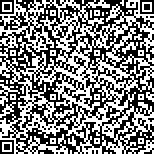| 本文已被:浏览 2167次 下载 1930次 |

码上扫一扫! |
|
|
| 海洋浮游桡足类摄食纤毛虫的研究 |
|
张武昌,陈雪,李海波,丰美萍,于莹,赵苑,肖天
|
|
中国科学院海洋研究所 海洋生态与环境重点实验室 青岛;中国科学院海洋研究所 海洋生态与环境重点实验室 青岛,中国科学院大学 北京;中国科学院海洋研究所 海洋生态与环境重点实验室 青岛,中国科学院大学 北京;中国科学院海洋研究所 海洋生态与环境重点实验室 青岛,中国科学院大学 北京;中国科学院海洋研究所 海洋生态与环境重点实验室 青岛,中国科学院大学 北京;中国科学院海洋研究所 海洋生态与环境重点实验室 青岛;中国科学院海洋研究所 海洋生态与环境重点实验室 青岛,中国科学院海洋研究所 海洋生态与环境重点实验室 青岛;中国科学院海洋研究所 海洋生态与环境重点实验室 青岛,中国科学院海洋研究所 海洋生态与环境重点实验室 青岛;中国科学院海洋研究所 海洋生态与环境重点实验室 青岛
|
|
| 摘要: |
| 20 世纪60 年代起, 人们发现了许多有关桡足类摄食纤毛虫的直接或间接的证据。20 世纪70 年代, 有人在实验室内培养纤毛虫并开展桡足类对其清滤率的研究, 结果表明桡足类对纤毛虫的清滤率为0.1 - 58.1mL/(ind.?h)。桡足类对纤毛虫的摄食方式有多种, 包括伏击摄食和通过游泳过滤海水中的纤毛虫等。有的纤毛虫有逃避摄食的行为。20 世纪80 年代末, 自然状况下桡足类群体对自然饵料中纤毛虫的摄食得到了研究, 结果表明桡足类对纤毛虫的清滤率多数情况下低于40mL/(ind.?h)。实验室内和自然海区的研究都表明, 与浮游植物相比, 桡足类倾向于选择摄食纤毛虫。根据现场测定的清滤率和桡足类丰度估计自然海区桡足类对纤毛虫的摄食压力的大部分研究结果表明, 桡足类群体对纤毛虫生物量的摄食压力大约为每天5%。这些自然海区的研究多集中在近岸区域, 需要加强对大洋浮游桡足类摄食纤毛虫的研究。 |
| 关键词: 浮游纤毛虫 桡足类 摄食 清滤率 |
| DOI:10.11693/hyhz20130600071 |
| 分类号: |
| 基金项目:中国科学院战略性先导科技专项, XDA11030202.2 号; 国家自然科学基金, U1406403 号; 国家重点基础研究发展计划,(973 计划), 2014CB441504 号 |
|
| MARINE PLANKTONIC COPEPODS GRAZING ON CILIATES: A REVIEW |
|
Zhang Wuchang,Chen Xue,Li Haibo,Feng Meiping,Yu Ying,Zhao Yuan and Xiao Tian
|
|
Key Laboratory of Marine Ecology and Environmental Sciences, Institute of Oceanology, Chinese Academy of Sciences, Qingdao,Key Laboratory of Marine Ecology and Environmental Sciences, Institute of Oceanology, Chinese Academy of Sciences, Qingdao; University of Chinese Academy of Sciences, Beijing,Key Laboratory of Marine Ecology and Environmental Sciences, Institute of Oceanology, Chinese Academy of Sciences, Qingdao; University of Chinese Academy of Sciences, Beijing,Key Laboratory of Marine Ecology and Environmental Sciences, Institute of Oceanology, Chinese Academy of Sciences, Qingdao; University of Chinese Academy of Sciences, Beijing,Key Laboratory of Marine Ecology and Environmental Sciences, Institute of Oceanology, Chinese Academy of Sciences, Qingdao; University of Chinese Academy of Sciences, Beijing,Key Laboratory of Marine Ecology and Environmental Sciences, Institute of Oceanology, Chinese Academy of Sciences, Qingdao,Key Laboratory of Marine Ecology and Environmental Sciences, Institute of Oceanology, Chinese Academy of Sciences, Qingdao
|
| Abstract: |
| Since the 1960s, marine planktonic-copepods has been found to ingest ciliates indicated by direct or indirect evidence. In 1970s, clearance rates on ciliates were studied in laboratory, and were revealed between 0.1 and 58.lmL/(ind.h) in most cases. Different copepods have different ways to graze on ciliates, including ambush feeding and suspension feeding. Some ciliates have predator-deterrent strategies such as jumping. Studies on copepods predation on the ciliates in situ began in 1980s. Those studies showed that the clearance rates were below 40mL/(ind.h). Copepods clearance rates on ciliates were higher than that on phytoplankton, which suggests that copepods may feed selectively on ciliates. The grazing pressure can be estimated in the clearance rate and copepod abundance in situ. Grazing pressure was about 5% per day in most cases. Most of previous studies were conducted in coastal areas or in laboratory. Copepod grazing on ciliates in oligotrophic oceanic waters remains poorly understood. |
| Key words: planktonic ciliates copepods grazing clearance rate |
